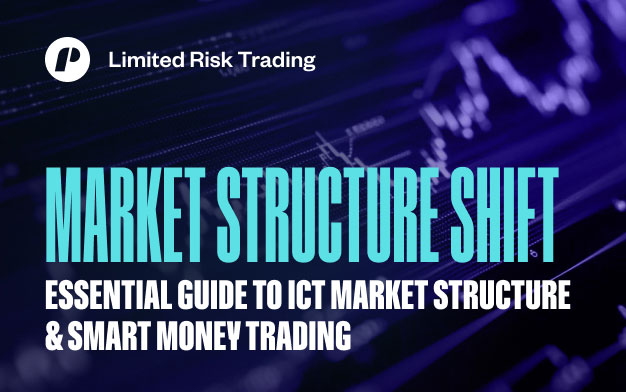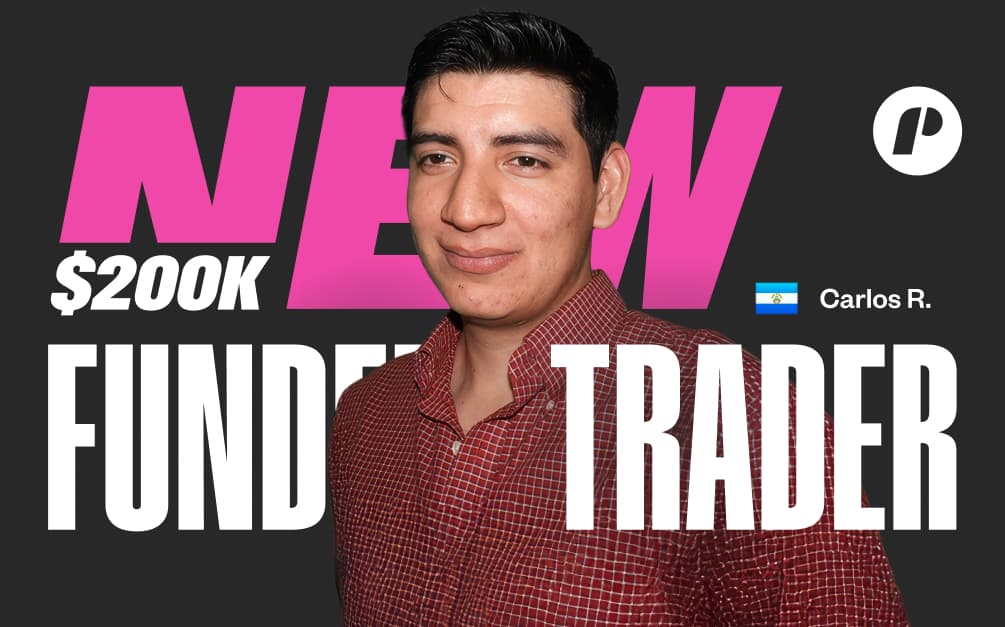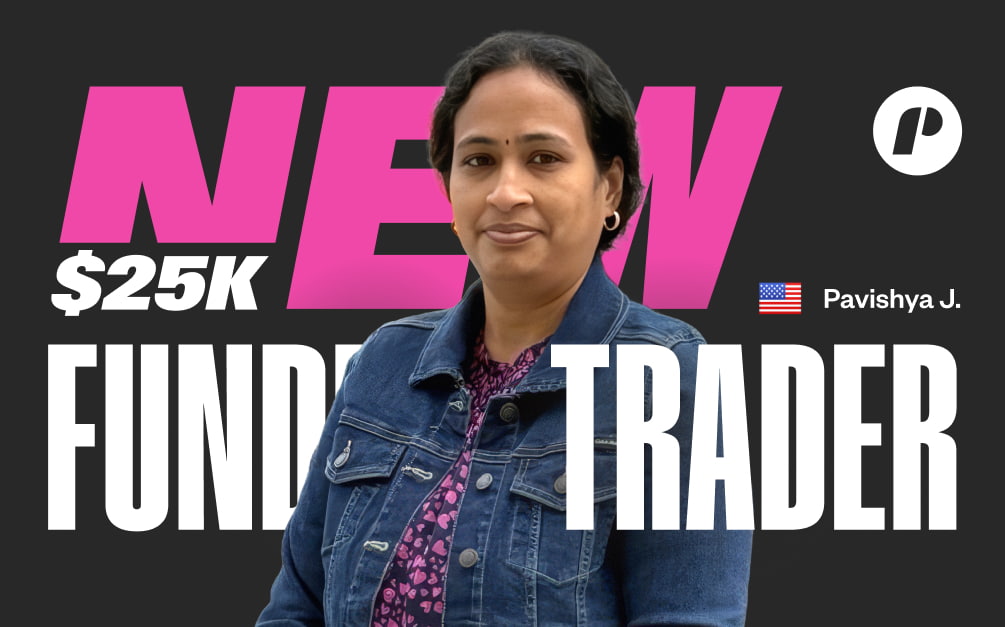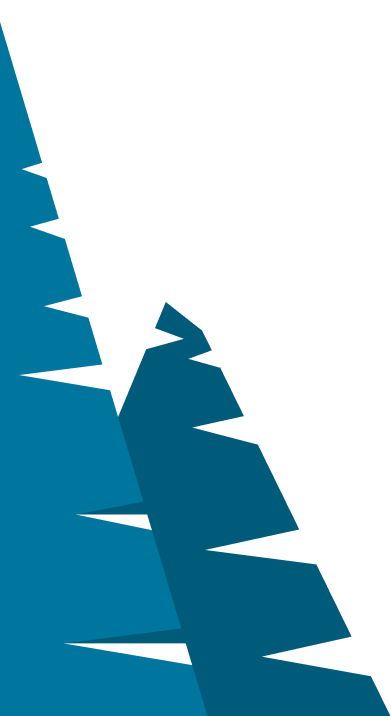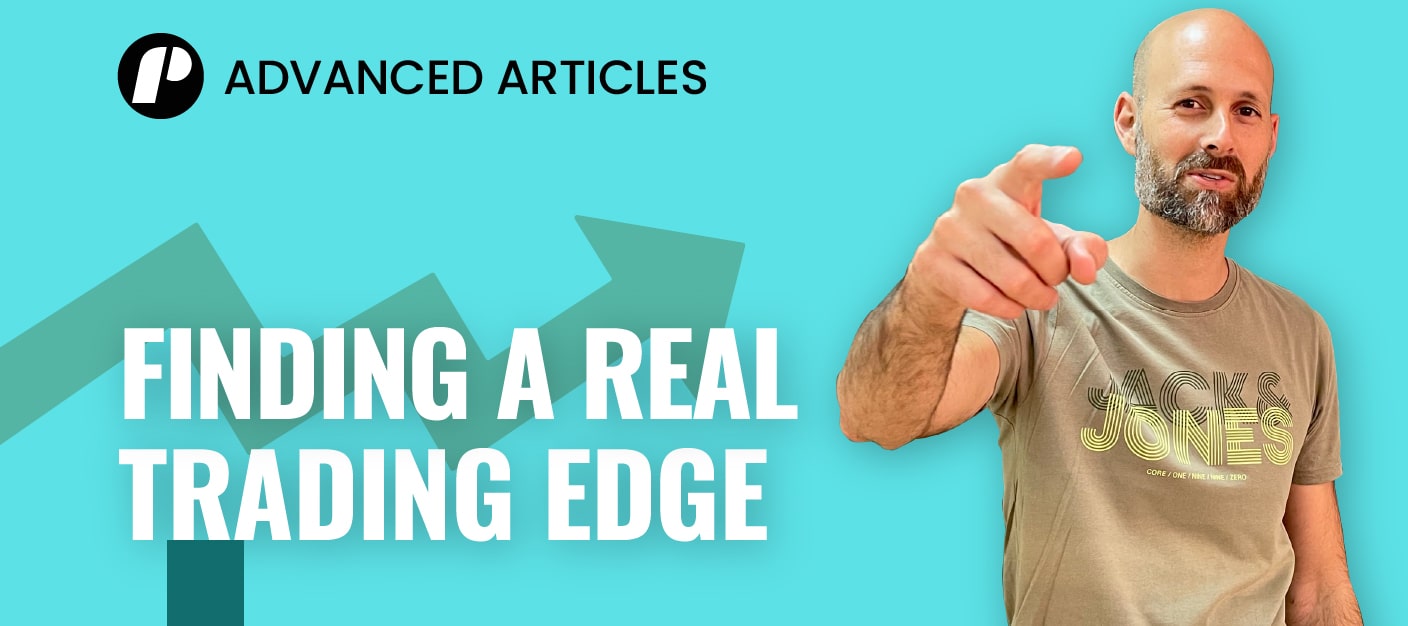
The importance of trading with a strategy cannot be overemphasized. Irrespective of the type of trader you are, be it day trading, position trading, and so on, you need to make trading decisions based on statistics and analysis. Trading with risk management greatly influences how much you make and lose.
But like risk management, everyone is also interested in having a trading edge, but very few know much about a real trading edge. Don’t worry; this article will explain what a trading edge is, its importance, and how to capitalize on it. Let’s delve into the details.
What is a trading edge?
Trading edge is essentially an approach that helps traders accumulate more profits than losses. Trading edge can be anything from a psychology to a strategy, an understanding, technology, etc. Provided it gives an advantage while trading, it can be regarded as a trading edge.
A trading edge is what separates a winning trader from a losing trader. Those without a trading edge may win trade occasionally, but those with a trading edge have a consistent pattern of making a profit. If you’re just starting your trading journey and don’t have a trading edge yet, don’t beat yourself, as many traders began like that.
Keep reading to learn more about trading edges and how to develop one.
Why is it important to find a trading edge?
Having a trading edge comes with several benefits, particularly helping you make more profits. Here are the reasons why it’s essential to find your trading edge:
An advantage over other traders
The truth is that there are several books and tutorials on trading and the market. While this is great, it means you are doing what every other trader is doing. Hence, you may end up using similar trading strategies or techniques.
The implication of using similar trading strategies is that the market will become highly competitive as traders make the same trading choices and end up with the same results. But traders with a trading edge can have an advantage over the market and other traders. Hence, they make more money than other traders.
Better trading results
Having a trading edge helps you land better trades on the market. However, your chances of achieving great success are limited if you don’t have one in place. Hence, it is a smart move to take your time to analyze and observe different markets and trades.
A trading edge will help you filter the several trades you have your eyes on and present you with the ones with the most opportunities. At the end of the day, you tend to experience fewer losses.
Reduces sloppiness
One thing about trading you should be cautious about is the thrill of winning. When you profit from a trade consecutively, there is no guarantee that it will continue. Many traders have made the mistake of being so excited about the profit they made in their previous trade that it made them sloppy in their next trade. However, there is a high probability that you won’t face such challenges if you have a trading edge in place.
Explore the right market
As a trader with an edge, there are countless strategies you can use to increase your profit. The trick is to experiment with several existing trading strategies to see what works best for you.
You should be able to find potential in every trade. The main thing is to understand how to apply the right edge in the right scenario.
Types of trading edge
There are so many types of trading edge techniques that exist. It doesn’t have to be anything too elaborate to fulfill its purpose, provided it adds a few points to the winning side of the equation.
Below are examples of true trading edges you can find based on the strategy you are using:
Ranged market edge
Range trading is a strategy that occurs when a security trades between consistent high and low prices for a period. Range trading is characterized by the security price staying in a definable range over time.
When range trading securities, take note of their volatility. Higher volatile securities yield more profits, but it means more risk than low volatile securities. With this strategy, you can develop an edge by using the right tool to know when assets are overbought or oversold. Learning this information will help you understand when to enter or leave the market with the most yield.
Trend market edge
Trend trading is another strategy traders use to bag more profit if they know how to use it. It involves buying securities that are trending. But take caution when using this strategy as they are easily susceptible to reversal.
Trend trading exists due to the fear and greed of traders who don’t want to miss out. A way to build an edge around this strategy is by analyzing the trend charts to know when traders’ greed and fear kick in. When traders are greedy, the buying pressure will be higher than the selling power leading to higher prices. And when the fear kicks in, the selling pressure will be higher than the buying pressure, leading to lower prices.
Small reversal edge
Essentially in miniature reversal trading, a trader will have to spot a trade that is close to a reversal and then aim to profit from it. Although many people avoid reversals because of the fear of loss, if they know what they’re doing, they could make a profit from the reverse of trends.
Most times, when the trend ends, the market consolidates in a range for a while before a new trend. However, the exciting part is that there is often a low volume and low highs at the uptrend of a new trend. And this indicates the perfect time to buy securities until the market settles into a tight range where you can sell the securities at a higher amount to make a profit.
Momentum edge
Momentum trading is very similar to breakout trading. It essentially is a strategy that involves buying securities when the price is moving in your favor with the hopes of selling high.
The momentum trading strategy is one of the most popular trading strategies traders practice worldwide. But you can have the edge over other traders by determining when securities are about to gain momentum and start moving before other traders.
Several factors, such as taxes, expenses, and so on, influence securities to gain momentum. Hence, look out for these factors and pay close attention to them for indicators.
Timing edge
Another prevalent trading strategy is timing. Time is very crucial when trading. A split second could mean several hundred or thousands of dollars in trade. While many people believe it’s impossible to time the market, it is not entirely true. You can time the market to an extent, but it may not be as consistent as people may expect it to be, especially with highly volatile securities.
To build a trading edge with this strategy, you also need to understand what causes a security price to fall and rise. When you do, observe it closely to stay ahead of other traders.
Slopes edge
A slope is another trading strategy that is relatively straightforward to use. The slope is an indicator that indicates the direction, volatility, and possibility of continuation of price action. On a chart, there are different types of slopes. Knowing how to use the previous slope to predict the next one will give you an edge over other traders.
It is impossible to determine what will happen next by merely looking at a slope. You must have spent a considerable amount of time observing the chart before you can predict the direction.
Risk management edge
How you manage risk can also be a way you have the edge over other traders. There are several trading decisions you wouldn’t make, not because they are not profitable but because they are too risky. In other words, your trading decisions are not driven by the profit you could make but by the level of risk associated with the security.
Having the edge over other traders in terms of managing risk depends on leverage. Find out how you trade better than others and use it to your benefit.
Why do many people struggle with finding a trading edge?
While several trading edges are available, some traders still struggle to find one. So, what are these traders doing wrongly that put them in this position? Let’s explore more on this.
Lack of preparedness and focus
Finding a trading edge takes a bit of work. If it was easy to find, everyone would be taking advantage of it. But it isn’t all that easy to find. If you’re struggling with finding an edge, it simply means that you might not be focusing enough or ready for such an advanced level of trading.
Some edges are right there, glaring at you on the chart! If you fall within this category of traders, the best thing to do is to take out time to study more about trading and be ready to work harder than other traders.
No industry knowledge
Another reason why you may be struggling with finding a trading edge is that you have little to no knowledge about the industry. The best way to find a trading edge is by experience. So, if you have not gathered enough experience, you may find it challenging.
Reading about trading and trading strategies is excellent, but until you put them to use, you can’t say with certainty that you know them yet. Traders that fall into this category should practice more with a demo trading account. This way, they can test their various hypotheses without losing real money.
Access to the right tools and resources
Traders who want to trade more successfully need to use the right tools and resources. Sadly, many traders hardly take the time to research the right tools that can help them in their trading journey.
Most traders use tools recommended to them by a friend or colleague without doing much research. If you are a trader, and this is how you started using whatever tools and resources you’re using, you need to take a step back and pay attention to your tools. You need to have access to the best research tools, brokers, platforms, and chat rooms to find edges faster and more efficiently.
Poor analysis skills
How do you analyze data before concluding when to buy and sell a stock? How you go about your analysis could be another reason you’re struggling to find a trading edge. To find a trading edge, you need to hone your analysis skills so that you can see what others don’t on a chart.
The resources and tools you use can also impact your analysis, ensuring you get the best tool. Traders in this category can hone their analysis skills by practicing with a demo trading account.
How to develop a trading edge in 9 easy steps?
There are so many ways to develop a trading edge. Its simple process involves taking an already established strategy and adding detailed rules to filter out most potential trades to help you focus squarely on the most promising opportunities. Follow the steps below to develop a trading edge yourself.
Step 1: Educate yourself about the market
The trading industry is vast. If you want to succeed in it, you should be ready to learn. Educating yourself about trading isn’t something you do for a week, two weeks, or a couple of months. Learning about trading is a continuous process where you dedicate yourself to learning something new. The more you study the market, the broader your understanding and the likelihood of developing an edge over others. The trick to having the edge over other traders is to have a work ethic other traders don’t.
Step 2: Develop your strategy
There are several already established trading strategies you can learn about. Learn about the different approaches to know which one you prefer over others. You could even develop your strategy by taking an already established one and adding or removing the parameters you want. It would be best if you also defined your strategy’s entry and exit points, as timing are crucial in any trading strategy.
Note that developing your strategy is not easy, so be prepared to put in much work. Write down any trading strategy you come up with, as it may come in handy later.
Step 3: Test your strategy
Any trading strategy you come up with, you must test it to ensure it is effective. During the testing phase, please take note of its performance and weakness. Apply your strategy in many different trading scenarios to ensure its true edge. You can test the strategy with recent securities and ones that performed well in the past and determine if the edge will produce a profitable result.
It is not advisable to test any new trading strategy with real money. Instead, get a demo account to prevent losing funds.
Step 4: Define your strategy
A strategy may work as expected, or you may run into some hiccups. If you have some performance issues with your strategy, you need to reevaluate some parameters to fix them. It could be that you need to slightly reduce your stop-loss order or recalibrate when you enter the market.
Experiment with the several parameters in your strategy until you figure out what is causing the performance issues. After refining your trading strategy, you should also test it again to ensure you fix the issues.
Step 5: Manage your risk
Risk management is crucial when trading. While there are ways you can minimize how much you can lose, like the stop-loss order, you need first to determine how much you are willing to lose.
The risk appetites of traders are different, as some traders can handle losses better than others. If you have a little risk appetite, then you need to set your stop-loss order to 1% or less. You can also manage your risk by setting how much money you can use to trade in a day or week. For example, you could set a limit that stops you from trading if you lose 5% of your trading account.
Step 6: Understand trading psychology
Having a trading strategy is great, but you need to understand trading psychology if you have an edge. Traders need to be disciplined; otherwise, they might incur a loss irrespective of the strategy they use.
Trading requires mental capabilities to follow a trading strategy even in the changing market condition. Doubts and overconfidence can ruin any trader irrespective of the number of years they have spent trading. Traders must not be emotional, especially after a substantial loss of profit.
To help you think straight about trading, read books and watch videos about errors other traders made in their reading journey and learn from their mistakes.
Step 7: Keep a trading journal
It would be best to keep a journal of your trading journey as it helps you make better trading decisions. For example, you could write things like your entry and exit point. You can always refer back to your journal when you find yourself trading similar security and learn how you handled it. You can also write what you did poorly in your journal and how it can be improved or suggestions on how to handle it. So if it happens again, you can refer to what you documented.
Journaling could also lead to developing a new strategy that will help you have the edge over other traders. Ultimately, you need to start it if you have not been journaling.
Step 8: Calculate your trading edge
It is also helpful to quantify your trading edge. Although there are several ways to calculate your trading edge, positive expectancy is one of the most popular. The positive expectancy formula determines if, on average, taking a trade will be profitable. Hence the formula states:
Expectancy= (win rate * average) – (lose rate * average loss)
Step 9: Be patient
Finally, you should be patient when having the edge over other traders. Consistency is the key to becoming a successful, profitable trader. While the steps we highlighted seem straightforward, it takes time to accomplish. So even if you don’t see the result overnight, stay calm, as the payoff will come once you find a strategy with a true edge.
How to improve your trading edge?
The truth no one will tell you about trading is that we are our trading history. Your trading history plays a significant role in your everyday position sizing. So, how well you performed in the past will influence how you size your position. By studying your past, you can determine several things that can help you improve your trading edge. For example, you can build a profit and loss distribution of your trades to determine your trading style.
If you’re making more losses than profit, you should consider restrategizing. You can also improve your edge by limiting drawdown when your style goes out of favor. Also, while mainstream trading will advise you to take on more risk when it works, our suggestion is not to take on more risk. Many traders have a problem because they take on too much risk, and it does not pay in the long run.
Conclusion
Having a trading edge is something every trader should aspire to. Although having a trading edge does not guarantee 100% profit, it certainly makes trading a lot easier with better odds of making a profit. You can develop as many edges as possible by starting with popular strategies and customizing the rules.
Also, when you do develop an edge, be careful how you use it so as not to sustain a significant amount of loss. The market often changes such that an edge may no longer be such an edge after a while. Ultimately, trade with caution and have fun while doing it.
If you liked this post make sure to share it!
